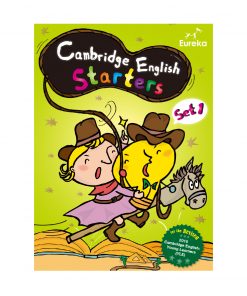Icebreaker Games for Primary Schools
| 1. Names and Actions | 2. Names and Adjectives | 3. Guess My Introduction | ||
| 4. Two truths and One Lie | 5. Fruit Salad | 6. Fortunately / Unfortunately | ||
| 7. Anything but “I am fine, thank you” |
Names and Actions
Contributed by: Veronica
How to play: https://youtu.be/Pd8_pZ2wHo8?t=76
Differentiation: When I play I normally repeat all the previous names after each new name, so it becomes a memory game. With a whole class of 30 it was too much to repeat EVERYONE so I did it by groups of 6 AND switched half way through between Names & Actions and Names & Adjectives (eg. first half of the class did things like Kiwi Kenny, Jelly Jessica, second half had to do their name with an action)
Materials: n/a
Suggested age: P1 – P6
Time needed: Around 1 minute per student (accounting for time to repeat all the names every time)
Especially good for: Breaking down barriers with shy students
Names and Adjectives
Contributed by: Veronica
How to play: https://youtu.be/Pd8_pZ2wHo8?t=76
Differentiation: When I play I normally repeat all the previous names after each new name, so it becomes a memory game. With a whole class of 30 it was too much to repeat EVERYONE so I did it by groups of 6 AND switched half way through between Names & Actions and Names & Adjectives (eg. first half of the class did things like Kiwi Kenny, Jelly Jessica, second half had to do their name with an action)
Materials: n/a
Suggested age: P1 – P6
Time needed: Around 1 minute per student (accounting for time to repeat all the names every time)
Especially good for: Breaking down barriers with shy students
Guess My Introduction
Contributed by: Veronica
How to play:
1. Teacher puts 3 clues on the board (eg. 2+1, Montreal, reading).
2. Students guess how they relate to me (eg. I like to read (easiest), I am from Montreal/Canada (harder), I have 2 brothers + 1 sisters (hardest).
3. Students write 3 clues about themselves on one side of a cue card.
4. Time permitting, can play a game where they go around the room.
5. At the end: Students write their name on their card and submit it to the teacher (fun way for you to know something about them and their interests).
Differentiation: Make easier or harder clues as examples
Materials: chalkboard, cue cards/paper for student answers
Suggested age: P4 – P6
Time needed: 5-20 mins (flexible)
Especially good for: Getting student interest in the teacher while still reducing teacher talking time!
Two Truths and One Lie
Contributed by: Twinkl
How to play: This game allows students to quickly get to know each other in a relaxed atmosphere. Each student shares three statements about themselves, two of which are true and one that is false. The other students must guess which statement is the lie and explain why they think that particular statement is not true. This game not only promotes communication but also allows students to learn more about each other’s backgrounds and interests in a fun way.
Materials: Optional (Two Truths and One Lie worksheet)
Suggested age: P1 or above
Time needed: 10-15 minutes (depending on class size)
Especially good for: Encouraging students to think of interesting or surprising facts about themselves to make the game engaging and fun
Fruit Salad
Contributed by: Theo Berry
How to play:
1. Put the students in a circle, with one less chair than needed.
2. One person stands in the middle, and must introduce themselves using; “My name is ___ and I like…”
3. If other people like the same thing, they must stand up and find a new seat, while the person in the middle also tries to sit down.
4. The last one standing is in the middle and must introduce themselves.
5. The person in the middle can also choose to say “Fruit Salad” which means that everyone in the group will need to move.
Safety note: This is best played with smaller groups or calmer groups. The minute you see students starting to become rough to get a seat, stop the game to reassert that they must be safe if you will keep playing.
Differentiation: Change what the person in the middle must say
Materials: Chairs
Suggested age: P1 – P6 (with caution on group size!)
Time needed: 15 mins
Especially good for: High energy, breaking barriers with shy students
Fortunately / Unfortunately
Contributed by: Veronica
How to play:
1. Write the words “Fortunately, Unfortunately” on the board.
2. Students will think of 2 sentences using “Fortunately…Unfortunately”.
3. Teacher gives 2 examples “FORTUNATELY, I got a cake for my birthday!! UNFORTUNATELY…the cake was made of dirt” or “Fortunately, I got an A on my English exam. Unfortunately, it was a dream.”
4. Give students thinking time.
5. Invite students to share to the whole class, or to a partner.
Differentiation: For weaker classes, give an example that can be applied many times. eg. it was a dream, so they only half to think of half. For stronger or older groups, give more complicated examples to set the tone of expectation.
Materials: Chalkboard to write Fortunately…Unfortunately…
Suggested age: P1 – P6
Time needed: 5 mins
Especially good for: Giving students a chance to be funny in English!
Anything but “I am fine, thank you”
Contributed by: Veronica
How to play:
1. Write 3-4 adjectives on the board at the start of class (eg. amazing, awful, tired, sad, terrible, etc.).
2. Explain that you will ask students “How are you” and they must answer using one of the words on the board with “because”.
3. Give examples and let students know they can make something up that isn’t true, eg. I/m TERRIBLE because a dinosaur ate my homework.
Optional: Scratch off the words after a student has used it, and continue until all words have been used, This keeps it short and sweet.
Differentiation: Easier/harder words (can introduce new words to them this way!)
Materials: chalkboard to write adjectives
Suggested age: P3 – P6
Time needed: 5 mins
Especially good for: Buying yourself set up time – Once your class knows this activity you can walk in the class, write 3-4 adjectives on the board, they know what it’s for, so start trying to think of the best sentence they can with it. This gives you 1-2 minutes to get your things in order, open any ppt for the day, etc. And by the time you’re ready and ask “How are you” multiple hands should shoot up!






